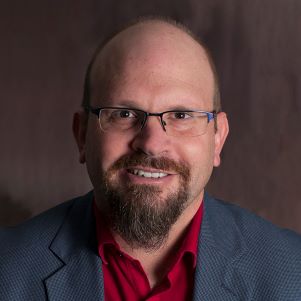“I learned a lot of things in medical school, but mortality wasn’t one of them.” So begins the bestselling 2014 book by surgeon and Harvard Medical School professor, Atul Gawande. I suspect that many today could reframe this sentence in light of how they have been formed in Christian discipleship. “I have come to know and love much about the gospel in my years in the church community. But learning to die, or to be with the dying, isn’t one of them.”
In our late-modern Western context, it can be tempting to treat death – particularly the death of the young, or the middle-aged – as an anomaly, even a scandal. To bury a son or daughter is unnatural. On a day-to-day level, we tend to assume that it will happen only to others. Indeed, while dying used to take place in the family room, in the presence of children, relatives and friends from church, it is now usually relegated to the out-of-sight: hospitals and nursing homes. Scarred bodies are handed over to funeral professionals to be brightened up for one last appearance. And then, following a “celebration of life” service, we bury the dead and are expected to start making our way through the stages of grief.
In our late-modern Western context, it can be tempting to treat death as an anomaly, even a scandal.
On the one hand, there are important truths underlying the convictions that go hand in hand with some of these practices. Truly, for Christians, there is a sense in which all death is unnatural – or that, at the least, death is an enemy whose destructive workings have not yet been vanquished. When the apostle Paul quotes Isaiah saying, “Death has been swallowed up in victory,” he is looking forward to a day in which the dead and the living will take on “imperishable” bodies in resurrection (Rom. 15:54). It hasn’t happened yet. That final victory has not yet come. Until then, it’s certainly reasonable to treat death as an enemy, to handle the bodies of the dead with care and dignity and to celebrate the lives of those we have lost.
And yet, this contemporary set of practices – or, this “cultural liturgy,” in the words of James K.A. Smith – bears rather feeble witness to the astonishing, cosmos-altering reality of Christ’s resurrection. Ironically, witness to that resurrection is muted because we push dying and death so desperately to the sidelines. As Gawande points out, doctors usually are not trained to deal with the problem of death. And increasingly, Christians are not trained to deal with the problem of death either. How are we to bear witness to the good news of a New Creation hope if we believe the Kingdom of God is already completely here, giving us our best days now? Do we really ache for resurrection when we act as if medicine or a prayer for healing solves the problem of death until post-retirement? We can be tempted to imagine eternal life as an extension of our present lives, where we go to see Grandma and Grandpa and play some golf. But eternal life is all about Jesus Christ, the Lamb who was crucified and rose again, who will be worshipped in the coming age by all the nations. To live more fully into this exalted hope, we must come to terms with our dusty, earthy, dying bodies. We need to rediscover a Christian art of dying – one not just for the elderly, but for the 20-year-old and the 40-year-old, who are just as mortal as the 90-year-old.
Thankfully, earlier Christians – Protestant, Roman Catholic and Orthodox – have traveled these paths before. They have reflected deeply on the “ars moriendi” (art of dying) as John Sikorski explores in this issue. Moreover, other articles herein show how the scriptural witness gives us a compelling vision of heavenly hope that makes our preoccupation with near-death experiences, or looking for our best life now, appear pale in comparison. Indeed, our hope is for “an eternal weight of glory beyond all comparison” (2 Cor. 4:17). We are in mysterious territory, to be sure. As Ann Conklin points out, there are both mysteries and scriptural promises that hold together as we seek to console those grieving the loss of family members. But this mysterious territory is one that none of us can avoid. Whether it comes in the loss of a father or mother, a daughter or a spouse or while contemplating one’s own death, there is no question that dying and death is a path that our feet will trod. And approaching it as ones who belong to Jesus Christ, the crucified and risen Lord, can enable us to live as the small, decaying, mortal creatures that we are – while trusting in the Triune God who promises to put new flesh on dry bones.
Todd Billings teaches theology at Western Theological Seminary, Holland, Michigan. Special thanks to the Louisville Institute, which provided funds for a grant administered by Billings to focus on cultivated resurrection hope in congregations in an age of medicalized dying. All of the articles in this issue result from the colloquies and events facilitated by that grant. Particular thanks as well to Katlyn DeVries and Nathan Longfield, who assisted Billings in editing this issue of Perspectives.
Photo: Jerry Kiesewetter/Unsplash

